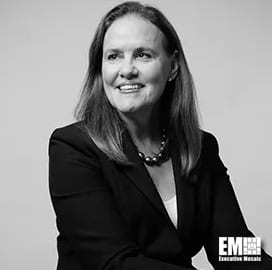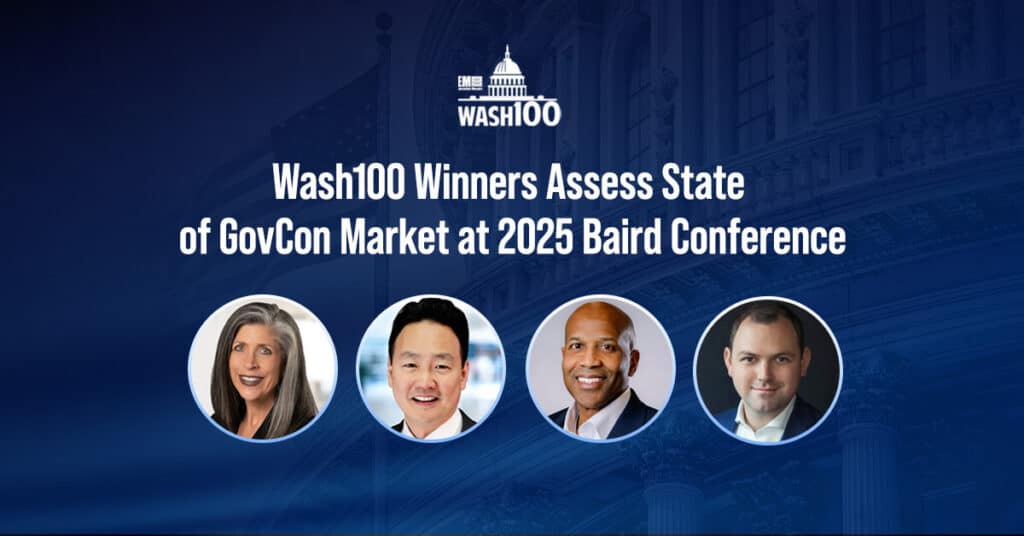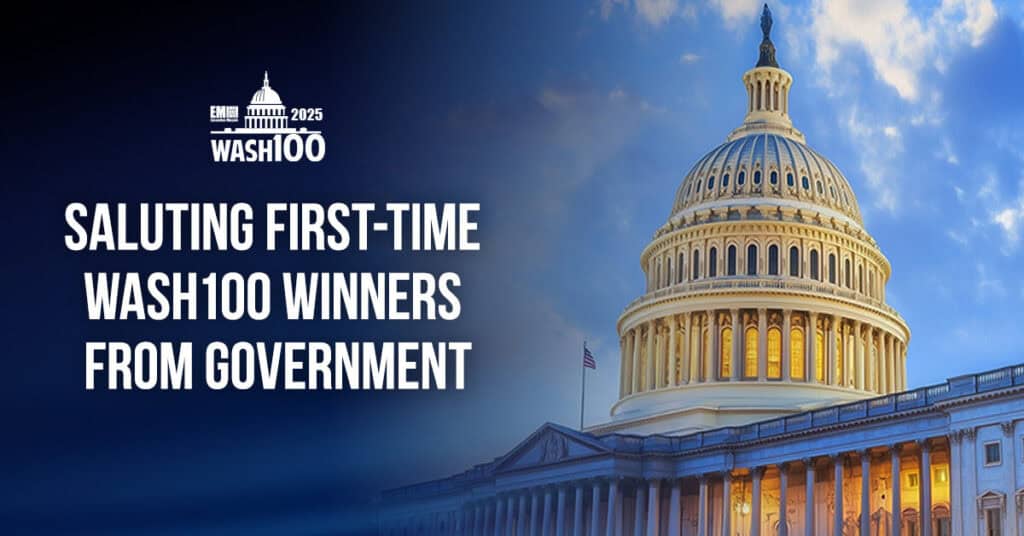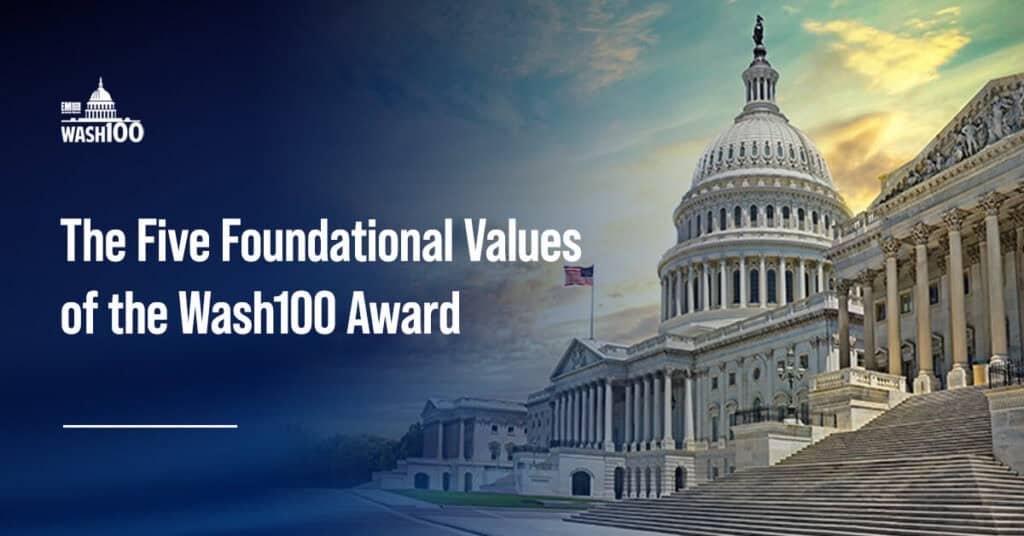Future near-peer adversaries will attempt to contest all domains and utilize complex and congested terrain to mitigate current joint force capabilities and reduce effectiveness of U.S. Department of Defense (DoD) tactical maneuver elements.
During Potomac Officers Club’s Artificial Intelligence for Maneuver Virtual Event, Michèle Flournoy, co-founder and managing partner of WestExec Advisors, was featured in a fireside chat with Greg Wenzel, 2020 Wash100 Award recipient and executive vice president with Booz Allen Hamilton. Wenzel moderated the fireside chat by posing questions on the future of defense as technology evolves.
If you missed Artificial Intelligence for Maneuver Virtual Event, you can still access the event OnDemand by visiting Potomac Officers Club’s Event Archive.
Jim Garrettson, founder and chief executive officer of Potomac Officers Club, introduced Flournoy and Wenzel, noting both executives’ experience throughout the defense sector, and their capabilities to drive innovative solutions moving into the future.
Wenzel initiated the fireside chat by asking Flournoy about the tactical investments that will be top of mind for the Department of Defense (DoD), in lieu of the recent pandemic and economic crisis.
“The crisis that we’re in and with competing priorities, I do there’s going to be downward pressure on the defense budget, no matter who wins the election. It’s recognized on both sides of the aisle that we have national security issues that need to be addressed,” Flournoy said.
She said that the defense sector has to invest in economic and technical competitiveness, such as Science & Technology, STEM education and innovation. She added that addressing those concerns will prepare the nation for the future.
“It feels like there’s a pivot toward technology and information warfare,” Wenzel said. “As you think about the next decade for DoD, how will leaders balance between kinetic and tech?”
Flournoy said that the largest differentiator is the people within the U.S. DoD. Investments in the workforce and service should be a top priority. In terms of modernization, Flournoy said that the department should invest in faster, more accurate decision making, or a “network of networks,” which will be a “decisive edge on the battlefield” and add resiliency.
Wenzel pivoted the conversation by addressing how the defense sector should shift its culture to improve agility. “We have to get away from proprietary software and move to an open mission architecture software, where we integrate plug and play systems,” Flournoy said.
While there is a shift to that approach, it is vital that companies evolve their business models to continue revenue as opposed to a proprietary program. Flournoy also said that there has to be a shift in software and the development of those systems. It should be an iterative process, and train the workforce based on that mentality. There’s no room to fail fast and learn, Flournoy said.
Wenzel then asked Flournoy how she believes the DoD can balance the investments between legacy systems and the forces, such as Army Futures Command, that looks to develop innovative solutions and operability.
Flournoy said that allies and partners are critical to maintaining a competitive advantage. “If we can build a network that they can connect into, we can have people with various levels of access that can gain data, while protecting classified information,” Flournoy said.
There also has to be a discussion within the department of how they can leverage partnerships to achieve an end state, which will add awareness to where DoD can contribute to defense and the warfighter.
With the National Defense Strategy, Wenzel asked Flournoy how the next administration should conduct the strategy, and how it will change. Flournoy said that “there is a fair amount of consensus on the diagnosis of the problem, which is China and Russia.” She added that there should be a broadening of the transnational threats, but there also has to be a sharpening of strategic objectives. Deterrence is essential to defense allies and interests.
In terms of multiyear spending priorities, defense has to signal an interest to invest. Manned systems and teaming platforms will give greater ability and capacity to defend. Not only should there be an investment in defense, but there should also be a focus on diplomatic strategy. “This is a multidimensional competition,” Flournoy said.
Each service has their own priorities in terms of mission and acquisition process, Wenzel stated. He asked Flournoy how they should work collaboratively to unite systems. Flournoy responded, stating that there should be a common architecture so that there can be interoperability. She said that technology investments are essential to advance the nation’s competitive edge.
Flournoy added that the decision makers need to focus on how O&M can be used, such as leveraging emerging technologies like AI, more efficiently to improve mission availability and readiness. She concluded, stating that there should be a common standard that enables interoperability across the defense landscape.
Following Flournoy’s opening discussion, the Artificial Intelligence for Maneuver Virtual Event also hosted an expert panel, moderated by Joel Dillon, vice president of Global Defense, Army Account, with Booz Allen Hamilton.
Featuring Col. John Cochran of the DoD, Col. Jay Wisham of Army Futures Command (AFC) and Capt. Christian Dunbar of the Department of the Navy, the panelist discussed how advances in artificial intelligence and machine learning algorithms can enable human-machine teams to bring greater precision, certainty, speed and mass to the battlefield.
If you missed Artificial Intelligence for Maneuver Virtual Event, you can still access the event OnDemand by visiting Potomac Officers Club’s Event Archive.





